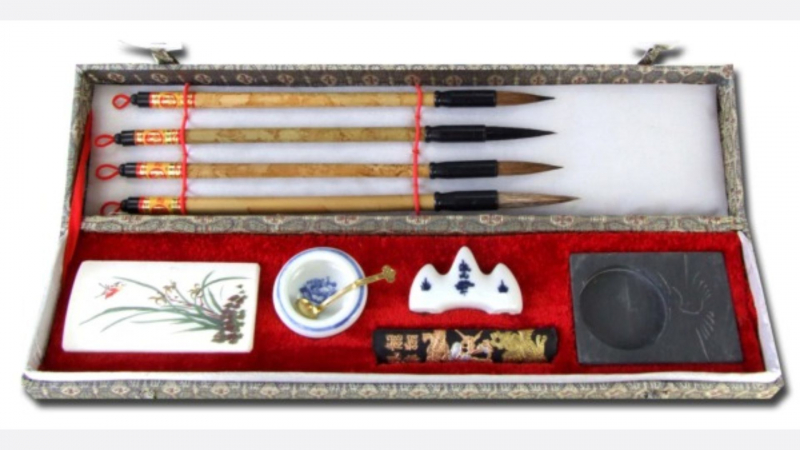Chinese Calligraphy
Calligraphy, meaning "beautiful writing," has been recognized as an art form in many different cultures around the world, but its importance in Chinese culture is unparalleled. Calligraphy was considered the ultimate visual art form in China from a very early date, valued more than painting and sculpture, and rated alongside poetry as a source of self-expression and cultivation. In fact, how one wrote was just as essential as what one wrote. It is important to take into account a number of aspects in order to comprehend how calligraphy came to hold such a significant position, including the materials used in calligraphy, the characteristics of the Chinese written alphabet, and the value placed on writing and literacy in traditional China.
Brush, ink, paper, and inkstone are some of the supplies used in calligraphy. Although archaeological evidence suggests that brushes were used in China far earlier, their widespread use began during the Han dynasty. A common brush is made out of a bundle of animal hairs (black rabbit hair, white goat hair, and yellow weasel hair were all popular) squeezed within a bamboo or wood tube (though jade, porcelain, and other materials were also occasionally used). The hairs are not all the same length; rather, an inner core is surrounded by shorter hairs, which are covered by an outer layer that tapers to a point. Brushes come in a range of forms and sizes, which define the style of the line produced. But the one thing these brushes all share is adaptability. More than any other characteristic, this one enables the calligraphic line to be so expressive and flexible.
Calligraphy ink is typically formed from lampblack, a sooty residue produced by burning pine resin or oil behind a hood. The lampblack is collected, mixed with adhesive, and then pressed into molds. The solidified cakes or sticks can then be ground against a stone and combined with water, allowing the calligrapher to adjust the thickness of the ink and color density. Ink cakes and ink sticks themselves eventually became decorative art forms, with many well-known artists creating designs and patterns for their molds.
One of China's most significant contributions to the world of technology is the invention of paper, which is widely recognized. Although recent tomb discoveries show that paper was known at least a century earlier, tradition attributes the creation of the method to Cai Lun in 105 C.E. Paper served as an accessible substitute for silk as a base material for calligraphy and painting. Paper was created from a variety of fibers, including mulberry, hemp, and bamboo.
Brush, ink, and paper, along with the inkstone (a carved stone slab with a reservoir for grinding ink and mixing it with water), are regarded in China as the Four Treasures of the Study (wenfang sibao), emphasizing the great regard with which calligraphy materials are held. These Four Treasures are made using the same materials as traditional Chinese painters. Some critics have pointed to this as a reason why calligraphy is more revered in China than abroad.
It is helpful to think about the qualities that were prized when calligraphy started to emerge as an art form separate from mere writing; that is, when examples of handwriting started to be valued, collected, and treated as art, in order to understand how calligraphy came to occupy such a prominent position in China. One of the oldest known occurrences is the Han emperor Ming of the first century, who sent a messenger to retrieve a fragment of his cousin's writing before he died away after learning that he was near death. By doing this, Emperor Ming hoped to preserve the calligraphic vestiges of his relative's individuality, enabling him to "commune" with him even after his death.
More than any other element, the assertion that calligraphy may be used as a medium of revelation and self-expression explains why it has been so highly valued. A brief examination of how calligraphic skill is mastered may offer some light on why such expressive potential was perceived to be inherent in calligraphy in the first place.
The written characters in Chinese are composed of thousands of distinct graphs. Each consists of a constant set of strokes that are carried out in a specific order. These very severe limitations produce one of the truly distinctive qualities of calligraphy: the viewer is able to mentally recreate, stroke by stroke, the precise steps by which the work was created. Additionally, the observer may see incredibly minute details of execution, such as whether a stroke was performed quickly or slowly or with great delicacy or force, etc.










